Columbia STS-1 Landing At Edwards AFB

Columbia STS-1 landing at Edwards AFB
STS-1 was the first orbital spaceflight of NASA’s Space Shuttle program. The first orbiter, Columbia, launched on April 12, 1981 and returned on April 14, 1981, 54.5 hours later, having orbited the Earth 36 times. Columbia carried a crew of two – mission commander John W. Young and pilot Robert L. Crippen.
More Posts from Cozy-airlessness and Others
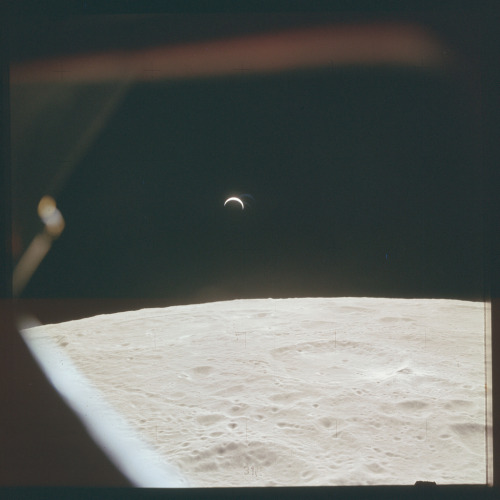

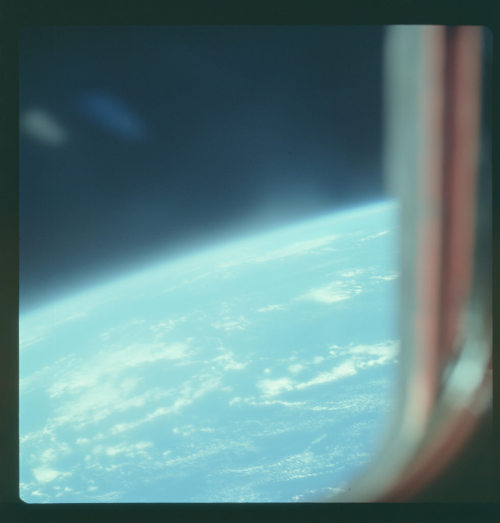
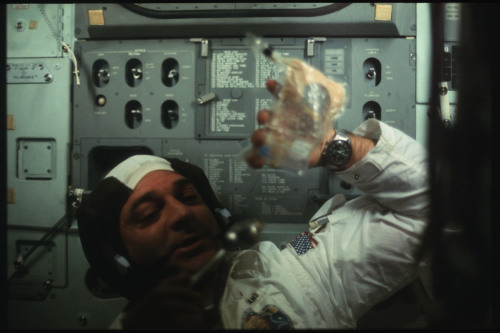
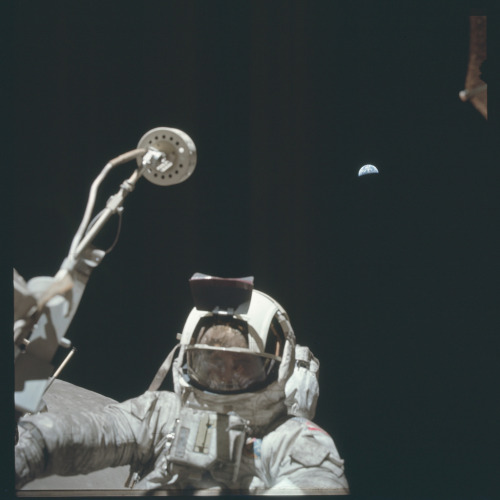
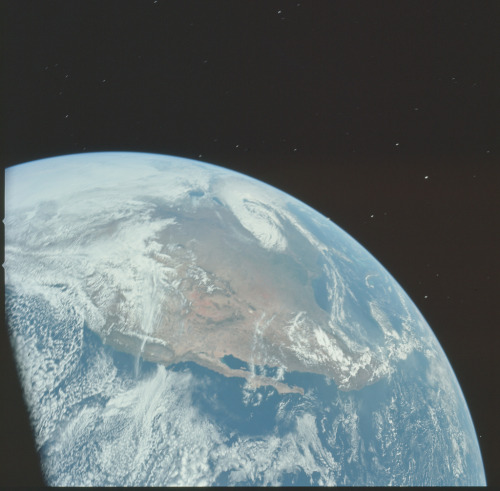
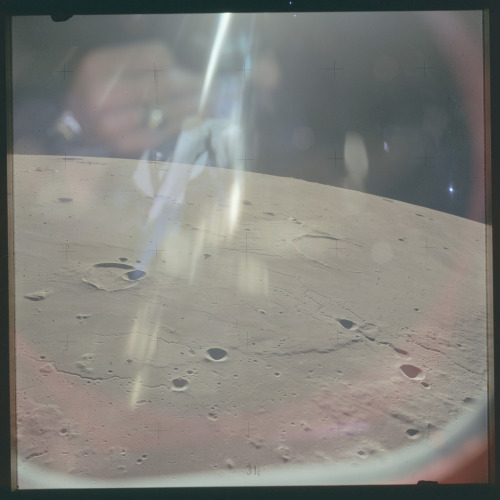

View of Earth from NASA’s Parker Solar Probe



Christmas Hanukkah in Space: Day 12
Jeff Hoffman of STS-61 demonstrates how a dreidel works in zero gravity and displays his traveling menorah on the first day of Hanukkah, December 1993. Hoffman was the second Jewish American astronaut and the first to spend the holiday in space.
There's this sort of anthropomorphizing that inherently happens in language that really gets me sometimes. I'm still not over the terminology of "gravity assist," the technique where we launch satellites into the orbit of other planets so that we can build momentum via the astounding and literally astronomical strength of their gravitational forces, to "slingshot" them into the direction we need with a speed that we could never, ever, ever create ourselves. I mean, some of these slingshots easily get probes hurtling through space at tens of thousands of miles per hour. Wikipedia has a handy diagram of the Voyager 1 satellite doing such a thing.

"Gravity assist." "Slingshot." Of course, on a very basic and objective level, yes, we are taking advantage of forces generated by outside objects to specifically help in our goals. We're getting help from objects in the same way a river can power a mill. And of course we call it a "slingshot," because the motion is very similar (mentally at least; I can't be sure about the exact physics).
Plus, especially compared to the other sciences, the terminology for astrophysics is like, really straightforward. "Black hole?" Damn yeah it sure is. "Big bang?" It sure was. "Galactic cluster?" Buddy you're never gonna guess what this is. I think it's an effect of the fact that language is generally developed for life on earth and all the strange variances that happen on its surface, that applying it to something as alien and vast as space, general terms tend to suffice very well in a lot more places than, like... idk, botany.
But, like. "Gravity assist." I still can't get the notion out of my head that such language implies us receiving active help from our celestial neighbors. They come to our aid. We are working together. We are assisted. Jupiter and the other planets saw our little messengers coming from its pale blue molecular cousin, and we set up the physics just right, so that they could help us send them out to far stranger places than this, to tell us all about what they find out there.
We are assisted.
And there is no better way to illustrate my feelings on the matter than to just show you guys one of my favorite paintings, this 1973 NASA art by Rick Guidice to show the Pioneer probe doing this exact thing:

"... You, sent out beyond your recall, go to the limits of your longing. Embody me. ..."
Gravity assist.




Pathfinder (OV-201) launching from its Lockheed C-5 carrier and accelerating to the moon during her maiden voyage, September 1983.
Clips from Episode 9, Season 2 Triage "For all Mankind"

Peripheral vision. Anna Lee Fisher prepares for the 14th mission in Space Shuttle history & the 2nd of Discovery, Nov 1984. Dr. Fisher spent 8 days in space during her career & also assisted in the development of the Canadarm & the design of spacesuits for women. Selected as an astronaut candidate in 1978, her other accomplishments include being a Doctor of Medicine & a Masters in Science graduate.









The world needs more space nerds
Apollos 15 and 17.
https://www.hq.nasa.gov/alsj/a15/images15.html
https://www.hq.nasa.gov/alsj/a17/images17.html










The most complex flying machine ever created
Underappreciated Space Shuttle photos
Endeavour being serviced in the OPF
Columbia, STS-62. The OMS pods can be seen glowing due to interactions with atomic oxygen in an unusually low perigee of 195km. The hexagonal outline of the Extended Duration Orbiter Pallet is also visible.
Atlantis, STS-98. Approaching the ISS.
Endeavour, STS-54. Reflections in the window.
Challenger, rolling out before STS-6.
Mission Specialist Kathryn Thornton looking out the window while aboard Endeavour, STS-49.
Discovery, stacked ahead of STS-41.
Atlantis, STS-44. Bumped camera.
Discovery ahead of STS-128.
Challenger, STS-41B. Launching for the heavens (zoom in).
-
 aleview liked this · 8 months ago
aleview liked this · 8 months ago -
 cozy-airlessness reblogged this · 1 year ago
cozy-airlessness reblogged this · 1 year ago -
 mesaz68t liked this · 2 years ago
mesaz68t liked this · 2 years ago -
 narihira8 liked this · 2 years ago
narihira8 liked this · 2 years ago -
 machoturbo liked this · 2 years ago
machoturbo liked this · 2 years ago -
 celestica-1988 reblogged this · 2 years ago
celestica-1988 reblogged this · 2 years ago -
 whatisidorloves reblogged this · 2 years ago
whatisidorloves reblogged this · 2 years ago -
 tagel liked this · 2 years ago
tagel liked this · 2 years ago -
 comilee liked this · 2 years ago
comilee liked this · 2 years ago -
 deathbyhiccups liked this · 2 years ago
deathbyhiccups liked this · 2 years ago -
 warisstupid reblogged this · 2 years ago
warisstupid reblogged this · 2 years ago -
 shermanm51 liked this · 2 years ago
shermanm51 liked this · 2 years ago -
 terranulliuswow reblogged this · 2 years ago
terranulliuswow reblogged this · 2 years ago -
 letsgetnuts1976 reblogged this · 2 years ago
letsgetnuts1976 reblogged this · 2 years ago -
 whitetrashwarhol liked this · 2 years ago
whitetrashwarhol liked this · 2 years ago -
 xratedbithez liked this · 2 years ago
xratedbithez liked this · 2 years ago -
 rainy-creator-koala liked this · 2 years ago
rainy-creator-koala liked this · 2 years ago -
 rainy-creator-koala reblogged this · 2 years ago
rainy-creator-koala reblogged this · 2 years ago -
 tank644 liked this · 2 years ago
tank644 liked this · 2 years ago -
 ecomunque reblogged this · 2 years ago
ecomunque reblogged this · 2 years ago -
 kadocphotography liked this · 2 years ago
kadocphotography liked this · 2 years ago -
 eupat reblogged this · 2 years ago
eupat reblogged this · 2 years ago -
 twisted-cyberflare reblogged this · 2 years ago
twisted-cyberflare reblogged this · 2 years ago -
 twisted-cyberflare liked this · 2 years ago
twisted-cyberflare liked this · 2 years ago -
 mosartcorner liked this · 3 years ago
mosartcorner liked this · 3 years ago -
 sunshadows88 liked this · 3 years ago
sunshadows88 liked this · 3 years ago -
 clawedrockdawg reblogged this · 3 years ago
clawedrockdawg reblogged this · 3 years ago -
 denalidog24 liked this · 3 years ago
denalidog24 liked this · 3 years ago -
 iwantedamogusasmyblogname liked this · 3 years ago
iwantedamogusasmyblogname liked this · 3 years ago -
 grateful4good liked this · 3 years ago
grateful4good liked this · 3 years ago -
 virginofpurity liked this · 3 years ago
virginofpurity liked this · 3 years ago -
 distresscalls liked this · 3 years ago
distresscalls liked this · 3 years ago -
 buddha1701e reblogged this · 3 years ago
buddha1701e reblogged this · 3 years ago -
 azrael556 liked this · 3 years ago
azrael556 liked this · 3 years ago -
 lonestarflight reblogged this · 3 years ago
lonestarflight reblogged this · 3 years ago -
 mustangshelbyguy reblogged this · 3 years ago
mustangshelbyguy reblogged this · 3 years ago

21 · female · diagnosed asperger'sThe vacuum of outer space feels so comfy :)
233 posts
